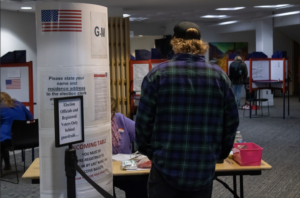Attending events; Talking to people; Factual reporting; Concise writing; Hours of editing; Constructing budgets; and Designing layouts. The processes of publishing a paper in a student newsroom are the same as the processes in the biggest newsrooms in the country, and for this reason, student newsrooms deserve as much appreciation and protection as they can get.
As the staff of The Maine Campus prepares to publish the final edition for the 2018-19 school year, the editorial board wanted to create a space to celebrate and stress the importance of the student newsroom, for the University of Maine and for colleges and universities across the nation.
Student newspapers provide a space for student journalists to gain hands-on experience. It exposes inspiring reporters and editors to ethical processes, reporting dos and don’ts, correct writing style and so much more. But students who are not journalism majors benefit from student newspapers too. Student papers represent the demographics on college and university campuses whose stories are not being told in mainstream media.
Student papers cover campus groups advocating for their causes; and send their messages to their peers who would not have read about the events in local or national papers. This could include stories covering LGTBQ rights demonstrations, events celebrating Native American culture or clubs fundraising for a good cause.
Beyond campus events, student newspapers benefit students by keeping university and college administration in check. National, state and local papers provide a checks and balances system for local, state and national governments, and student papers do the same for their schools. This means covering the selection process for a university president, investigating how schools handle professor of faculty misconduct or reporting on the adequacy of campus resources for students.
But across the nation, the ability for student newspapers to provide these services is under attack. A survey sent out to every four-year flagship public college newspaper in the U.S. by the Student Press Law Center (SPLC) found that more than 60 percent of editors reported experiencing at least one instance of their school administration attempting to censor their paper. A further breakdown of that number showed results including: “51.9 percent reported a staff member being asked by administration not to publish something; 23.3 percent reported being threatened with funding cuts because of newspaper content; 7.4 percent reported a staff member’s job being threatened; 7.2 percent reported a staff member facing disciplinary action,” according to SPLC.
Censorship from school administrators acts as a large roadblock in the already difficult process of publishing a student run newspaper. Further, it’s often unconstitutional. The Supreme Court first ruled in favor of free expression on college and university campuses in 1967, when the Court declared classrooms as a “marketplace of ideas,” in the case Keyishian v. Board of Regents. This was reaffirmed in another case, Healy v. James, when the Court stated that “states colleges and universities are not enclaves immune from the sweep of the First Amendment.”
But even in places where student newspapers aren’t facing the challenge of administrative censorship, many newsrooms are crumbling under the weight of a lack in funding. In 2018, three instances reported in The Medium painted this picture. The paper at Brooklyn College in New York City had to hold bake sales in order to raise enough money to publish their final two editions. Southern Methodist University’s student paper voted to merge their paper with the journalism department after running out of the money needed to publish independently. Wichita State’s newspaper faced a budget cut that slashed 50 percent of their funding, and only stayed afloat due to the university agreeing to buy $25,000 worth of ads.
The lack of funding in these organizations forced student newsrooms to face the end-all ethical decision: do they fold and shut their doors for good, or accept funding or support from other institutions and lose their independent status?
These three instances inspired three editors at the Florida Alligator, the student paper at the University of Florida, to create a social media campaign to generate support for student newsrooms across the country. This campaign, which takes the form in #SavetheStudentNewsroom, is celebrating its second year in 2019. The movement focuses on sharing online content that highlights editorials from student newspapers who write about the importance of the student newsroom. The stories are shared on their movement’s website, where readers can find ways to get involved in showing their support for newsrooms, read editorials and find testimonials from student editors defending the importance of college and university newspapers.
The Maine Campus, our writers and our editors urge our readers to support the student newsroom. Keeping student newsrooms alive allows the next generation of writers and editors to learn, adapt and engage in the journalistic process to prepare them for life and work after graduation. The student newsroom represents the college-aged demographic that often gets ignored. It reports on the on-goings of the campus and keeps students involved in their community’s events. It provides a watchdog service to university administration. The student newsroom is a service for college and university students and should be protected at all costs.








